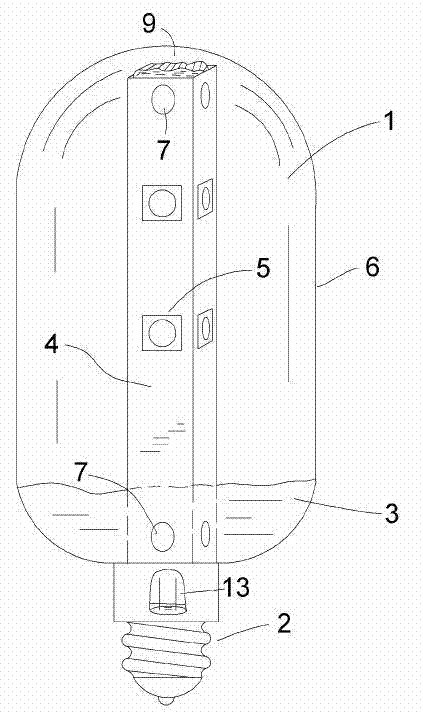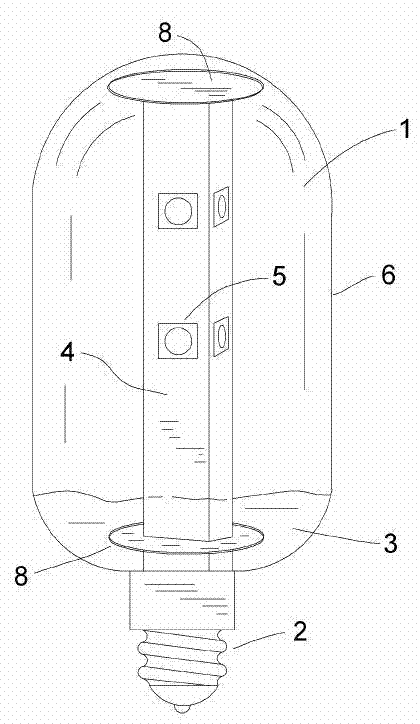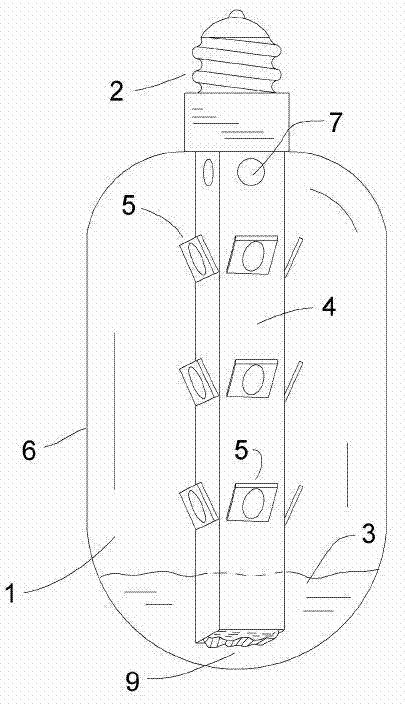Evaporation cooled lamp
A technology for cooling steam and lamps, which is applied to cooling/heating devices of lighting devices, lampshades, components of lighting devices, etc., and can solve problems such as LED cooling and light output life reduction
- Summary
- Abstract
- Description
- Claims
- Application Information
AI Technical Summary
Problems solved by technology
Method used
Image
Examples
Embodiment Construction
[0026] This invention relates to LED light fixtures (or other types of light fixtures) that use water or other coolant to evaporate inside a glass bulb to remove heat without the need for an external heat sink or connection to a heat sink.
[0027] Usually the pressure inside the fixture is reduced to lower the boiling point of the coolant. figure 1 An example of such a luminaire is shown.
[0028] The glass bulb 6 contains a support structure 4 or light pole for fixing the LED 5 or other light sources. This embodiment of the invention can be as figure 1 Use vertically or upside down as shown. The interior of bulb 1 can be evacuated to a pressure much lower than atmospheric pressure. The coolant collects into a cooling pool 3 at the bottom of the housing. By means of capillary action the wick 9 can guide the coolant upwards through the fixed LEDs. The small hole 7 at the bottom and / or top of the light pole 4 allows the coolant to enter the wick 9 at the position shown in ...
PUM
 Login to View More
Login to View More Abstract
Description
Claims
Application Information
 Login to View More
Login to View More - R&D
- Intellectual Property
- Life Sciences
- Materials
- Tech Scout
- Unparalleled Data Quality
- Higher Quality Content
- 60% Fewer Hallucinations
Browse by: Latest US Patents, China's latest patents, Technical Efficacy Thesaurus, Application Domain, Technology Topic, Popular Technical Reports.
© 2025 PatSnap. All rights reserved.Legal|Privacy policy|Modern Slavery Act Transparency Statement|Sitemap|About US| Contact US: help@patsnap.com



